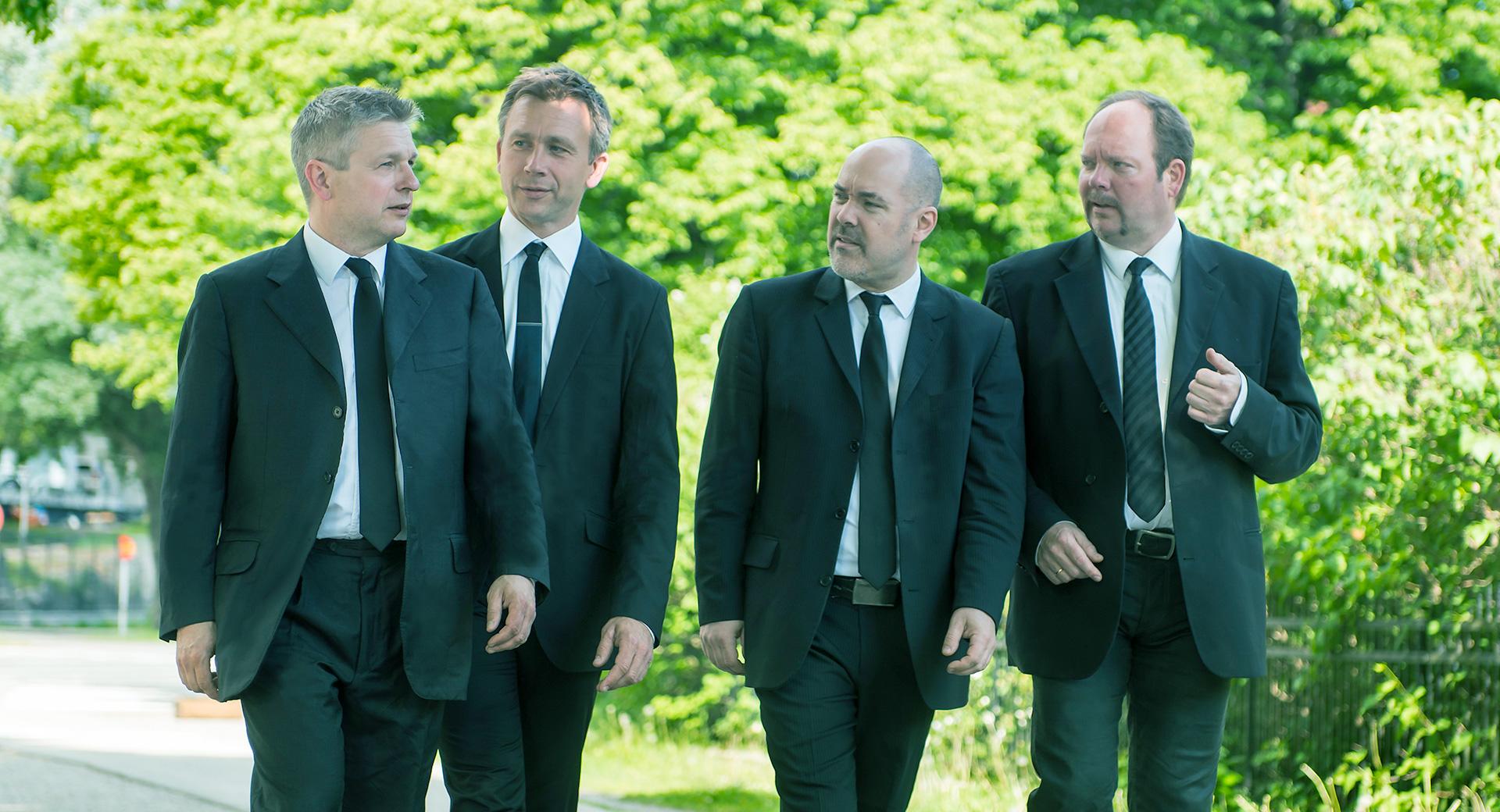The Seven Last Words of Christ
The multi-award-winning Stenhammar Quartet performs Joseph Haydn’s The Seven Last Words of Christ in a concert where the wondrously beautiful music is interwoven with words written and performed by representatives of different conceptions of life. The question of responsibility is a common thread in the texts.
This production is part of one or more concert series.

Playing Joseph Haydn’s The Seven LastWords of Christ is an intense experience for the musicians of a string quartet. The seven slow movements between the introduction and the final earthquake, Terremoto – which shook the ground when Jesus died, according to gospeller Matthew – give room for reflection, both on Haydn’s music, and on a tortured, dying man’s last words in this life. And perhaps on the fact that man has continued to hurt his own for two thousand years.
South of Seville, halfway to Gibraltar, lies the Andalusian town of Cádiz – Europe’s oldest continuously inhabited town. The brightness of the beaches is blinding against the blue Atlantic Ocean. White sandstone walls shade narrow alleyways, and the leaves of the orange trees rustle in the breeze in the square. When Jesuit priest Padre José inherited a fortune at the beginning of the 1780s, he decided to build a magnificent, oval chapel on top of the simple, subterranean chapel where he worked. First of all, he commissioned music from Europe’s most famous composer: Joseph Haydn. The little town of Cádiz would get an Easter service the like of which they had never seen.
Joseph Haydn had recently renegotiated his contract with the Esterházys. He could now publish his music with publishers outside the Hungarian court, and even compose commissioned by others. The request from Padre José was surprisingly detailed, and a big challenge, even for a composer with eighty symphonies behind him.
Writing seven consecutive, slow movements was no easy task. The music was to deepen the congregation’s experience of the seven biblical words, as the priest moved from the pulpit to the altar between readings and homilies. Haydn eventually found inspiration in the spoken rhythms of the actual Bible words. He turned them into musical themes in a nine-movement work for chamber orchestra, later rewritten for string quartet by Haydn himself.
Haydn had never been to Cádiz, but had the Easter traditions of the ancient town described to him. ‘The walls, windows and pillars of the church were dressed in black fabric, and only one large lamp, hanging from the middle of the dome, broke the deep darkness,’ Haydn wrote in the preface to one edition. Haydn gave a new dimension to this intense, mystical atmosphere with his music.
In this concert, structured around words, we meet for a moment of collective reflection.
Janna Vettergren



